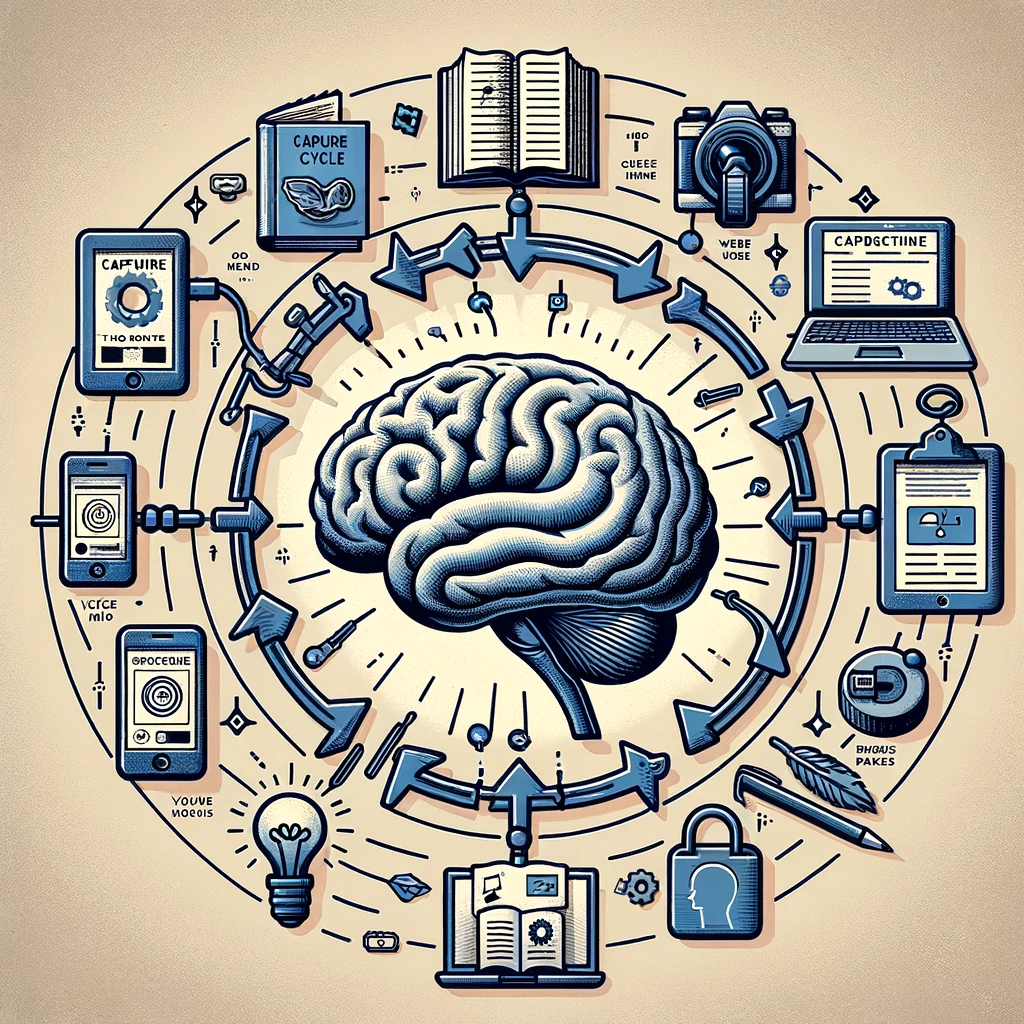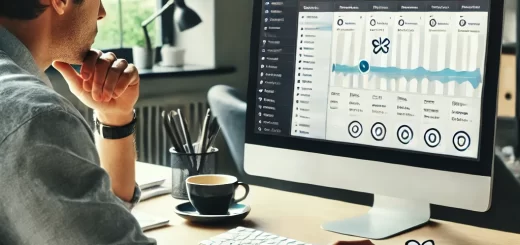The Capture Cycle of the Second Brain
In this article, we will delve into the Capture Cycle, one of the fundamental components of Tiago Forte’s Second Brain methodology. This cycle is crucial for ensuring that no valuable information slips through the cracks and that all relevant data is systematically collected for future use.
What is the Capture Cycle?
The Capture Cycle is the first step in the CODE framework (Capture, Organize, Distill, Express) of the Second Brain methodology. It involves gathering information from various sources and ensuring that it is recorded in a reliable, retrievable format. The aim is to collect all pertinent information that can later be organized, distilled, and used to create new outputs or inform decision-making.

Why is Capturing Important?
Capturing information effectively is essential for several reasons:
- Preventing Information Overload: By capturing information as it comes, you can prevent it from accumulating in your mind, reducing cognitive load and allowing you to focus on the task at hand.
- Ensuring Comprehensive Data Collection: Systematic capture ensures that no important details are forgotten, making your knowledge base more robust and reliable.
- Enabling Future Retrieval: Well-captured information can be easily retrieved and used when needed, saving time and effort in searching for data.
Methods of Capturing Information
There are several methods and tools for capturing information effectively:
- Manual Note-Taking: Traditional pen-and-paper methods are still valuable. Writing notes by hand can enhance memory retention and understanding.
- Digital Note-Taking: Apps like Evernote, Notion, and OneNote allow for easy and organized digital capture. They offer features like tagging, linking, and multimedia integration.
- Voice Recordings: Using voice memos or recording apps can be useful for capturing ideas on the go or recording meetings and lectures.
- Web Clipping: Tools like Pocket, Instapaper, and browser extensions allow you to save web pages, articles, and other online content for later reference.
- Photographs and Scans: Capturing images of whiteboards, documents, and other visual information can be a quick way to record data.
Best Practices for Capturing Information
To capture information effectively, consider the following best practices:
- Be Consistent: Develop a routine for capturing information. Make it a habit to record notes during meetings, save articles immediately after reading, and take photos of important visuals.
- Use Reliable Tools: Choose tools and apps that are reliable and integrate well with your workflow. Ensure that they offer features that meet your needs, such as offline access and cloud synchronization.
- Organize as You Capture: While capturing, try to add some level of organization. Use tags, categories, or folders to classify information, making it easier to organize later.
- Review Regularly: Regularly review your captured information to ensure it is complete and organized. This helps in maintaining a clean and useful knowledge base.
- Stay Selective: Not everything needs to be captured. Be selective about what you record to avoid clutter and focus on quality over quantity.
Tools for Capturing Information
Here are some tools that can enhance your capture process:
- Evernote: Great for capturing notes, web clippings, and organizing information with tags and notebooks.
- Notion: A versatile tool that allows for rich media capture, linking, and integration with other apps.
- OneNote: Useful for capturing handwritten notes, drawings, and digital content, with strong organizational features.
- Voice Memos: Built-in apps on smartphones that allow for quick voice recordings.
- Pocket: Excellent for saving articles and web content to read later, with tagging and offline access.
Conclusion
The Capture Cycle is a foundational aspect of the Second Brain methodology, ensuring that all relevant information is systematically collected and easily retrievable. By employing consistent capture methods and using reliable tools, you can build a comprehensive knowledge base that supports your productivity and creativity. Effective capturing not only reduces cognitive load but also enhances your ability to organize, distill, and express information, ultimately leading to better decision-making and innovation.



